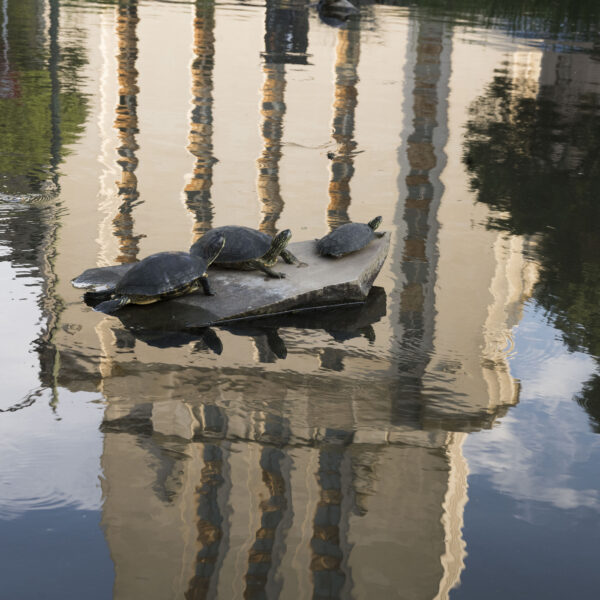Students returned to the Forty Acres this week for the start of another semester, greeted by brutally cold winter weather and bundled in layers to stay warm. But not all the usual campus residents were out and about.
The turtles in the UT Turtle Pond were noticeably absent, but don’t worry, they can handle the freezing temperatures just fine.
When it gets cold outside, the turtles’ body temperatures will drop, triggering a slowed-down metabolism, says Travis LaDuc, who oversees UT Austin’s herpetology collection at the Biodiversity Center in the College of Natural Sciences. The slower metabolism helps the turtles survive with less oxygen as they wait out the winter weather.
“The turtles are fine,” LaDuc says. “They are likely resting quietly in the leaves at the bottom of the pond, conserving their energy.”
The pond’s size and structure also work in favor of the turtles. While layers of ice will sometimes freeze at the top of the pond, its depth, surface area and pumping system keep it from freezing solid.

“These cold temperatures are within the normal range of extremes we deal with here in Texas,” LaDuc says. “Some turtles can remain under water for several days, as long as the water remains cold enough to keep their metabolism low.”
The turtle pond was built in 1939, around the same time the construction of the UT Tower ended. It first served as a research facility for the biology department and has recently started to serve that function again, this time as a research site for undergraduate students. The pond houses at least 100 turtles of multiple species, including the red-eared slider (making up the majority), common snapping turtle, Texas river cooter, Texas map turtle, common musk turtle and spiny softshell turtle.
“I don’t know the coldest temperatures that they can endure, but as long as the water isn’t frozen solid, I think they would probably survive for several days at the bottom the ponds,” LaDuc says.
When warmer weather returns, so will the turtles. In fact, they may already be back out in view by the time you’re reading this. Stop by and see for yourself.
The turtles aren’t the only animals dealing with the elements. Learn more about how other local wildlife handle winter weather.



